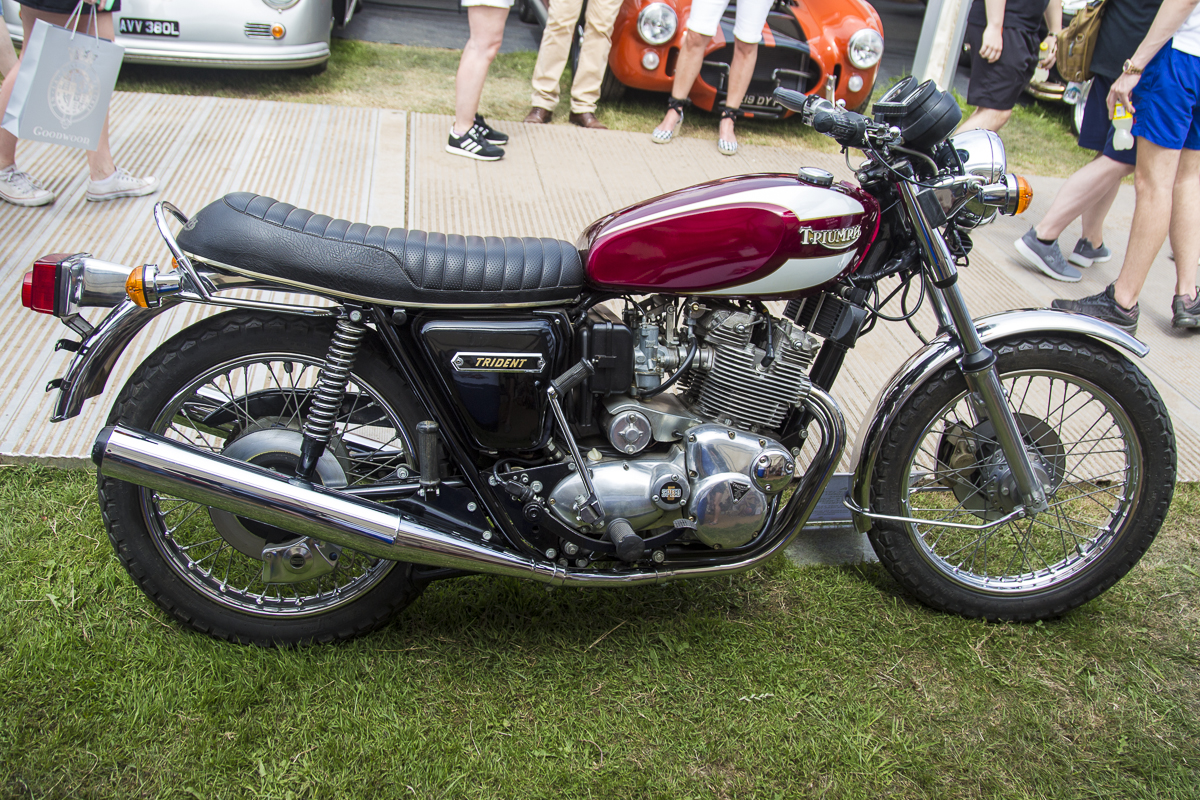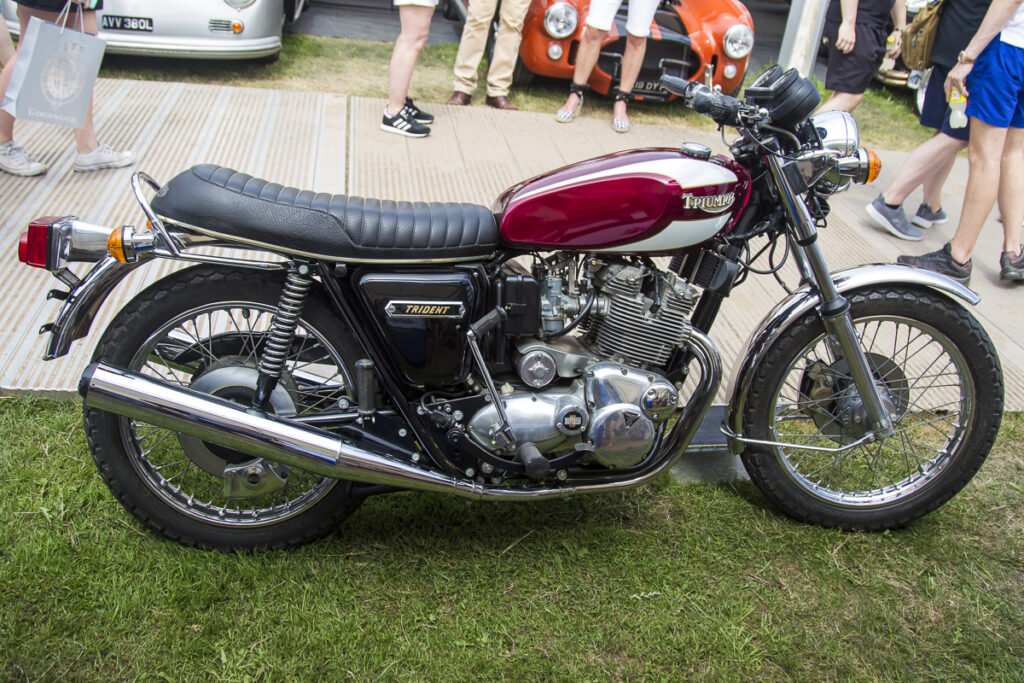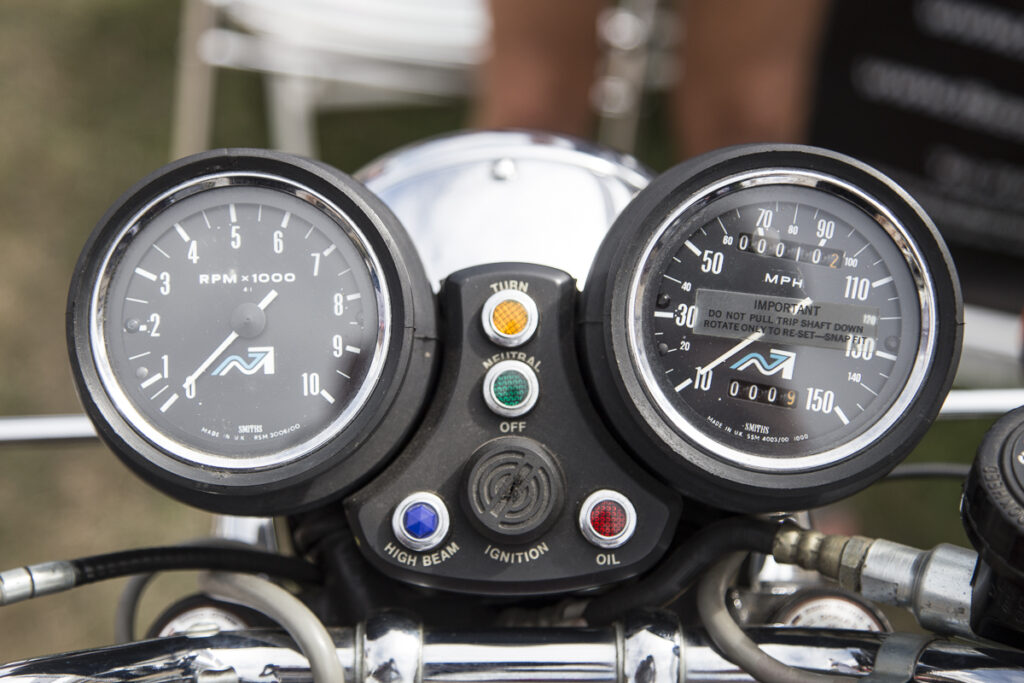
The Triumph Trident motorcycle is widely regarded as the world’s first ‘superbike’ despite being overshadowed by the Honda CB750. Manufactured by Triumph Engineering and the Birmingham Small Arms Company (BSA), the Trident was launched a few weeks prior to Honda’s CB750 in the summer of 1968. The motorcycle was a technically advanced, high-performance roadster motorcycle, bringing a new level of sophistication to street bikes.

The motorcycle was sold under both the Triumph and BSA marques as the Triumph Trident and BSA Rocket 3. Designed by motorcycle engineers Bert Hopwood and Doug Hele, the UK-built motorcycle was released to combat increased competition from the rapidly expanding and increasingly popular Japanese motorcycles.
The original prototype was ready in 1965, but the release was delayed by a cosmetic redesign. The prototypes had featured a teardrop-shaped tank in the classic Triumph style. Ogle Design was commissioned for a redesign by BSA/Triumph, delaying the release by 18 months. The new design featured a squarer fuel tank and a less-traditional appearance. This delay proved disastrous, allowing Honda to steal most of the publicity of launching the new era of the ‘superbike’ with their CB750.
Hopwood and Dele developed a three-cylinder engine for the Trident, developed from Triumph’s 1959 5TA 500 cc parallel-twin. The Trident engine was essentially a vertically split parallel twin with a separate central chamber to accommodate the third cylinder, unlike the Honda CB750 and other Japanese superbikes which had horizontally split crankcases. The 58 bhp (43 kW) cubic centimetres (45 cu in) air-cooled OHV unit construction straight-three engine had a top speed of 117.03 mph with acceleration times of 0-60 mph in 5.6 seconds (Cycle World).
Despite wide critical acclaim, the launch of the Triumph Trident was totally eclipsed by the Honda CB750. Sales, especially in the US market, were disappointing leading to Triumph reverting to a more classic look in 1970. In November 1974, Triumph launched the Model T160. It was a final effort to save large-scale motorcycle manufacturing in the UK. The new T160 was modernised to include features commonly seen on Japanese imports such as an electric start. They also reverted back to classic Triumph styling. However, the last classic Trident to leave the production line was in 1975, although slow sales meant that some were being sold as late as the end of 1977. This marked the end of an era for the British motorcycle industry. Between 1968 and 1975, 27,480 Tridents and Rocket 3 motorcycles were produced.

Smiths Instruments was the long-term recognised gauge supplier for both Triumph and BSA. For the Trident/Rocket 3, Smiths designed and supplied a Speedometer (0-150 mph), Tachometer (0-8000 rpm) and Fuel Gauge. The T160 featured two gauges: Speedometer (0-150 mph) and Tachometer (0-10000 rpm).
Smiths gauges for classic Triumph and BSA motorcycles continue to be manufactured in the UK today, using the original drawings and design data, at the Caerbont Automotive Instruments (CAI) facility just outside Swansea in South Wales.
Further information on Smiths instrumentation for classic motorcycles is available on our website, or to discuss a specific requirement please contact us on:
Via the contact form on our website
Email: [email protected]
Phone: +44 (0) 1639 732200
You can also follow us on social media for regular news updates, photographs and technical information: